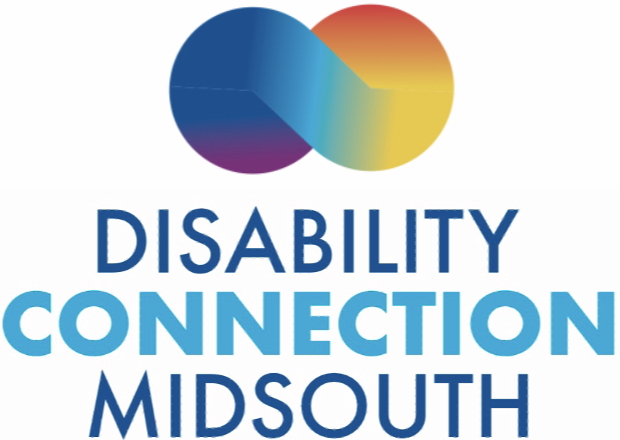Guidance on “Long COVID” as a Disability Under
the ADA, Section 504, and Section 1557
U.S. Department of Health Human Services
Office for Civil Rights
U.S. Department of Justice Civil Rights Division Disability Rights
Section
Although many people with COVID-19 get better
within weeks, some people continue to experience symptoms that can last months
after first being infected, or may have new or recurring symptoms at a later
time.1 This can happen to anyone who has had COVID19, even if the initial
illness was mild. People with this condition are sometimes called
“long-haulers.” This condition is known as “long COVID.”2
In light of the rise of long COVID as a
persistent and significant health issue, the Office for Civil Rights of the
Department of Health and Human Services and the Civil Rights Division of the
Department of Justice have joined together to provide this guidance.
This guidance explains that long COVID can be a
disability under Titles II (state and local government) and III (public
accommodations) of the Americans with Disabilities Act (ADA),3 Section 504 of
the Rehabilitation Act of 1973 (Section 504), 4 and Section 1557 of the Patient
Protection and Affordable Care Act (Section 1557).5 Each of these federal laws
protects people with disabilities from discrimination.6 This guidance also
provides resources for additional information and best practices. This document
focuses solely on long COVID, and does not address when COVID-19 may meet the
legal definition of disability.
The civil rights protections and
responsibilities of these federal laws apply even during emergencies. 7 They
cannot be waived.
1. What is long COVID and what are its
symptoms?
According to the Centers for Disease Control and
Prevention (CDC), people with long COVID have a range of new or ongoing
symptoms that can last weeks or months after they are infected with the virus
that causes COVID-19 and that can worsen with physical or mental activity.8
Examples of common symptoms of long COVID include:
- Tiredness or fatigue
- Difficulty thinking or concentrating (sometimes called
“brain fog”)
- Shortness of breath or difficulty breathing
- Headache • Dizziness on standing
- Fast-beating or pounding heart (known as heart
palpitations)
- Chest pain
- Cough
- Joint or muscle pain
- Depression or anxiety
- Fever
- Loss of taste or smell
This list is not exhaustive. Some people also
experience damage to multiple organs including the heart, lungs, kidneys, skin,
and brain.
2. Can long COVID be a disability under
the ADA, Section 504, and Section 1557?
Yes, long COVID can be a disability under the
ADA, Section 504, and Section 1557 if it substantially limits one or more major
life activities.9 These laws and their related rules define a person with a
disability as an individual with a physical or mental impairment that
substantially limits one or more of the major life activities of such
individual (“actual disability”); a person with a record of such an impairment
(“record of”); or a person who is regarded as having such an impairment
(“regarded as”). 10 A person with long COVID has a disability if the person’s
condition or any of its symptoms is a “physical or mental” impairment that
“substantially limits” one or more major life activities. This guidance
addresses the “actual disability” part of the disability definition. The
definition also covers individuals with a “record of” a substantially limiting
impairment or those “regarded as” having a physical impairment (whether
substantially limiting or not). This document does not address the “record of”
or “regarded as” parts of the disability definition, which may also be relevant
to claims regarding long COVID.
a. Long COVID is a physical or mental impairment
A physical impairment includes any physiological
disorder or condition affecting one or more body systems, including, among others,
the neurological, respiratory, cardiovascular, and circulatory systems. A
mental impairment includes any mental or psychological disorder, such as an
emotional or mental illness.11
Long COVID is a physiological condition
affecting one or more body systems. For example, some people with long COVID
experience:
- Lung damage
- Heart damage, including inflammation of the heart
muscle
- Kidney damage
- Neurological damage
- Damage to the circulatory system resulting in poor
blood flow
- Lingering emotional illness and other mental health
conditions Accordingly, long COVID is a physical or mental impairment
under the ADA, Section 504, and Section 1557. 12
b. Long COVID can substantially limit one or more major life
activities
“Major life activities” include a wide range of
activities, such as caring for oneself, performing manual tasks, seeing,
hearing, eating, sleeping, walking, standing, sitting, reaching, lifting,
bending, speaking, breathing, learning, reading, concentrating, thinking,
writing, communicating, interacting with others, and working. The term also
includes the operation of a major bodily function, such as the functions of the
immune system, cardiovascular system, neurological system, circulatory system,
or the operation of an organ.
The term “substantially limits” is construed
broadly under these laws and should not demand extensive analysis. The
impairment does not need to prevent or significantly restrict an individual
from performing a major life activity, and the limitations do not need to be
severe, permanent, or long-term. Whether an individual with long COVID is
substantially limited in a major bodily function or other major life activity
is determined without the benefit of any medication, treatment, or other
measures used by the individual to lessen or compensate for symptoms. Even if
the impairment comes and goes, it is considered a disability if it would
substantially limit a major life activity when the impairment is active.
Long COVID can substantially limit a major life
activity. The situations in which an individual with long COVID might be
substantially limited in a major life activity are diverse. Among possible
examples, some include:
- A person with long COVID who has lung damage that
causes shortness of breath, fatigue, and related effects is substantially
limited in respiratory function, among other major life activities.
- A person with long COVID who has symptoms of intestinal
pain, vomiting, and nausea that have lingered for months is substantially
limited in gastrointestinal function, among other major life
activities.
- A person with long COVID who experiences memory lapses
and “brain fog” is substantially limited in brain function, concentrating,
and thinking.
3. Is long COVID always a disability?
No. An individualized assessment is necessary to
determine whether a person’s long COVID condition or any of its symptoms
substantially limits a major life activity. The CDC and health experts are
working to better understand long COVID.
4. What rights do people whose long COVID
qualifies as a disability have under the ADA, Section 504, and Section
1557?
People whose long COVID qualifies as a
disability are entitled to the same protections from discrimination as any
other person with a disability under the ADA, Section 504, and Section 1557.
Put simply, they are entitled to full and equal opportunities to participate in
and enjoy all aspects of civic and commercial life.
For example, this may mean that businesses or
state or local governments will sometimes need to make changes to the way that
they operate to accommodate a person’s long COVID-related limitations. For
people whose long COVID qualifies as a disability, these changes, or
“reasonable modifications,” may include:
- Providing additional time on a test for a student who
has difficulty concentrating
- Modifying procedures so a customer who finds it too
tiring to stand in line can announce their presence and sit down without
losing their place in line
- Providing refueling assistance at a gas station for a
customer whose joint or muscle pain prevents them from pumping their own
gas
- Modifying a policy to allow a person who experience
dizziness when standing to be accompanied by their service animal that is
trained to stabilize them
5. What federal resources are there for people
with symptoms of long COVID?
- The Civil Rights Division of the Department of Justice
has the following page on its ADA.gov website that discusses topics
related to COVID-19 and the ADA: https://www.ada.gov/emerg_prep.html.
- If you believe that you or
another person has been discriminated against by an entity covered by the
ADA, you may file a complaint with the Disability Rights Section (DRS) in
the Department of Justice. Information about how to file a complaint is
available at https://www.ada.gov/fact_on_complaint.htm.
- The Administration for Community Living’s document,
“How ACL’s Disability and Aging Networks Can Help People with Long COVID,”
provides information on resources and programs to assist people with long
COVID. This document is available at https://acl.gov/sites/default/files/COVID19/ACL_LongCOVID.pdf.
- While employment is outside of the scope of this
guidance document, individuals who wish to learn more about COVID-19 and
employment can visit the following Equal Employment Opportunity Commission
page, which provides COVID-19 information and resources: www.eeoc.gov/coronavirus.
The contents of this document do not have the
force and effect of law and are not meant to bind the public in any way. This
document is intended only to provide clarity to the public regarding existing
requirements under the law or the Departments’ policies. July 26, 2021
______________________________________________
1 See Centers for Disease Control and
Prevention, Post-COVID Conditions, www.cdc.gov/coronavirus/2019-ncov/long-term-effects.html (last visited July 21, 2021).
2 The Centers for Disease Control and Prevention
also recognizes other post-COVID conditions, a series of illnesses resulting in
debilitating conditions, that can be similar to long COVID. See Centers for
Disease Control and Prevention, Post-COVID Conditions, www.cdc.gov/coronavirus/2019-ncov/longterm-effects.html (last visited July 21, 2021). This guidance may also be
applicable to other post-COVID conditions.
3 42 U.S.C. §§ 12101-12103, 12131-12189.
Although the ADA’s definition of disability applies to all parts of the ADA,
this guidance only addresses examples that may arise under Titles II and III of
the ADA.
4 29 U.S.C. § 794.
5 42 U.S.C. § 18116.
6 This guidance does not address examples of
reasonable accommodation or nondiscrimination in employment under Title I of
the ADA or Section 501 of the Rehabilitation Act. Employment issues related to
COVID-19 are discussed in technical assistance issued by the U.S. Equal
Employment Opportunity Commission, at https://www.eeoc.gov/wysk/what-you-should-know-about-covid-19-and-ada-rehabilitationact-and-other-eeo-laws.
7 See Department of Justice, Statement by the
Principal Deputy Assistant Attorney General for Civil Rights Leading a
Coordinated Civil Rights Response to Coronavirus (COVID-19), https://www.justice.gov/opa/pr/statement-principal-deputy-assistant-attorney-general-civil-rights-leading-coordinated-civil (last visited July 21, 2021); See also Department of Health and
Human Services, Civil Rights and COVID-19, A Compendium of Guidance on the
Civil Rights Implications of the COVID-19 Pandemic, https://www.hhs.gov/civil-rights/for-providers/civil-rights-covid19/index.html (last visited July 21, 2021).
8 See Centers for Disease Control and
Prevention, Post-COVID Conditions, www.cdc.gov/coronavirus/2019-ncov/long-term-effects.html (last visited July 21, 2021).
9 This guidance only addresses the definition of
disability under these Federal civil rights laws. It does not cover other
definitions of disability or eligibility requirements such as those necessary
to qualify for Federal benefit programs under Social Security.
10 See, e.g., 42 U.S.C. § 12102(1); 29 U.S.C. §
705(9)(B), (20)(B); 28 C.F.R. §§ 35.108, 36.105; 45 C.F.R. § 92.102(c)
11 28 C.F.R. §§ 35.108(b), 36.105(b); 45 C.F.R.
92.102(c).
12 While this guidance document focuses on long
COVID, we note that COVID-19 is also a physiological condition affecting one or
more body systems, and is therefore also a physical or mental impairment.





